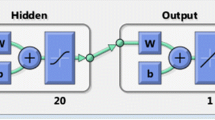Abstract
Objective: The involuntary periodic repetition of respiratory pauses or apneas constitutes the sleep apnea-hypopnea syndrome (SAHS). This paper presents two novel approaches for sleep apnea classification in one of their three basic types: obstructive, central and mixed. The goal is to improve the classification accuracy obtained in previous works. Materials and methods: Both models are based on a combination of classifiers whose inputs are the coefficients obtained by a discrete wavelet decomposition applied to the raw samples of the apnea in the thoracic effort signal. The first model builds adaptive data-dependent committees, subsets of classifiers that are specifically selected for each input pattern. The second one uses a new classification approach based on the characteristics each type of apnea presents in different segments of the apnea. This model is based on the Error Correcting Output Code and its input coefficients were determined by a feature selection method (SVM Recursive Feature Elimination). In order to train and test the systems, 120 events from six different patients were used. The true error rate was estimated using 10 different simulations of a 10-fold cross validation. The mean test accuracy, obtained over the test set was 85.20%±1.25 for the first model and 90.27%±0.79 for the second one. The proposed classifiers surpass, up to the author’s knowledge, other previous results. Moreover, the results achieved are correctly enough to obtain a reliable diagnosis of SAHS, taking into account the average duration of a sleep test and the number of apneas presented for a patient who suffers SAHS.
Access this chapter
Tax calculation will be finalised at checkout
Purchases are for personal use only
Preview
Unable to display preview. Download preview PDF.
Similar content being viewed by others
References
American Academy of Sleep Medicine Task Force. Sleep-related breathing disorders in adults: Recommendations for syndrome definition and measurement techniques in clinical research. Sleep 22, 667-689 (1999)
Varady, P., Micsik, T., Benedek, S., Benyo, Z.: A novel method for the detection of apnea and hypopnea events in respiration signals. IEEE T Bio.-Med. Eng. 49(9), 936–942 (2002)
Thorpy, M.: Handbook of Sleep Disorders. Informa Healthcare (1990)
Lu, Y.N., Zhang, H., Zhang, W.T.: The application of hierarchical evolutionary approach for sleep apnea classification. Machine Learning and Cybernetics 6 (2005)
Senny, F., Destine, J., Poirrier, R.: Midsagittal Jaw Movement Analysis for the Scoring of Sleep Apneas and Hypopneas. IEEE T Bio.-Med. Eng. 55(1), 87–95 (2008)
Hernández-Pereira, E.: Técnicas de Inteligencia Artificial e Ingeniería del Software para un sistema inteligente de monitorización de apneas de sueño, Tesis Doctoral. Departamento de Computación. Facultad de Informática. Universidade da Coruña (2000)
Cabrero-Canosa, M., Castro-Pereiro, M., Graña-Ramos, M., Hernández-Pereira, E., Moret-Bonillo, V., Martín-Egana, M., Verea-Hernando, H.: An intelligent system for the detection and interpretation of sleep apneas. Expert Systems with Applications 24(4), 335–349 (2003)
Fontenla-Romero, O., Guijarro-Berdiñas, B., Alonso-Betanzos, A., Moret-Bonillo, V.: A new method for sleep apnea classification using wavelets and feedforward neural networks. Artificial Intelligence in Medicine 34(1), 65–76 (2005)
Dietterich, T.G.: Ensemble methods in machine learning. LNCS, pp. 1–15. Springer, Heidelberg (2000)
MacKay, D.J.C.: A practical Bayesian framework for backpropagation networks. Neural Comput. 4(3), 448–472 (1992)
Weka 3 - Data Mining with Open Source Machine Learning Software in Java, http://www.cs.waikato.ac.nz/ml/weka/
MATLAB - The language of technical computing, http://www.mathworks.com/products/matlab/
Bishop, C.M.: Pattern recognition and machine learning. Springer, New York (2006)
Hollander, M., Wolfe, D.A.: Nonparametric Statistical Methods. John Wiley, New York (1973)
Hsu, J.C.: Multiple Comparisons. Theory and Methods. Chapman & Hall, Boca Raton (1996)
Verikas, A., Lipnickas, A., Malmqvist, K.: Selecting neural networks for a committee decision. Int. J. Neural Syst. 12(5), 351 (2002)
Breiman, L.: Half&Half bagging and hard boundary points. Technical report (1998)
Guyon, I., Weston, J., Barnhill, S., Vapnik, V.: Gene selection for cancer classification using support vector machines. Mach. Learn. 46(1), 389–422 (2002)
Dietterich, T.G., Bakiri, G.: Solving multiclass learning problems via error-correcting output codes. Arxiv preprint cs.AI/9501101 (1995)
Author information
Authors and Affiliations
Editor information
Editors and Affiliations
Rights and permissions
Copyright information
© 2010 Springer-Verlag Berlin Heidelberg
About this paper
Cite this paper
Guijarro-Berdiñas, B., Hernández-Pereira, E., Peteiro-Barral, D. (2010). Classifying Sleep Apneas Using Neural Networks and a Combination of Experts. In: Meseguer, P., Mandow, L., Gasca, R.M. (eds) Current Topics in Artificial Intelligence. CAEPIA 2009. Lecture Notes in Computer Science(), vol 5988. Springer, Berlin, Heidelberg. https://doi.org/10.1007/978-3-642-14264-2_28
Download citation
DOI: https://doi.org/10.1007/978-3-642-14264-2_28
Publisher Name: Springer, Berlin, Heidelberg
Print ISBN: 978-3-642-14263-5
Online ISBN: 978-3-642-14264-2
eBook Packages: Computer ScienceComputer Science (R0)




